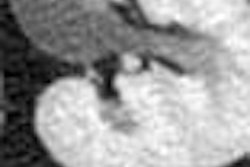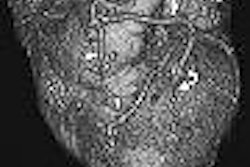SAN FRANCISCO - Are today's powerful multislice CT scanners delivering too much radiation dose to patients? If so, how can radiologists limit the amount of radiation dose that patients are receiving during CT scans?
Dear AuntMinnie Member,
SAN FRANCISCO - Are today's powerful multislice CT scanners delivering too much radiation dose to patients? If so, how can radiologists limit the amount of radiation dose that patients are receiving during CT scans?
This important topic was the subject of a debate between two prominent radiologists at this week's International Symposium on Multidetector-Row CT. We're featuring coverage of the meeting this week in our CT Digital Community.
Sounding the alarm about CT radiation dose was Dr. Aart van der Molen from Leiden University Medical Center in the Netherlands. Dr. van der Molen pointed out that while the relationship between cancer risk and radiation dose at very low levels is still not fully understood, there is little reason to doubt the validity of the linear non-threshold theory, which holds that radiation dose is always potentially harmful, regardless of the level.
More significantly, there seems to be little understanding of the risks of radiation dose among patients, radiologists, and referring physicians. In addition, many imaging facilities are not making full use of low-dose techniques that could reduce the radiation dose delivered to patients, Dr. van der Molen said.
Taking the opposing viewpoint was Dr. Mathias Prokop from University Medical Center in Utrecht, the Netherlands. While Dr. Prokop acknowledged that imaging providers should be aware of radiation dose issues, he pointed out the many benefits derived from CT scanning that can outweigh the risks from radiation exposure.
Dr. Prokop also pointed out holes in the linear non-threshold theory that could limit its applicability to low dose levels such as those used in multislice CT scanning. And while radiation hormesis theory, which claims a beneficial effect for radiation at very low levels, is still unproven, it has tantalizing implications.
In the end, both radiologists agreed on the need for better awareness of radiation dose, and more utilization of CT scanning protocols that minimize dose, in particular among at-risk populations like children.
Read all about our coverage of the MDCT symposium in our CT Digital Community, at ct.auntminnie.com.



















